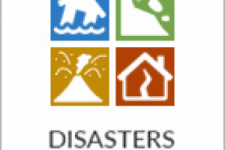
The NASA Disasters Program promotes the use of Earth observations to improve the prediction of, preparation for, response to, and recovery from natural and technological disasters. By sponsoring application science, the Program advances the readiness of results to enable disaster management practices, advance damage reduction, and build resilience. The Program targets a spectrum of disasters, including floods, earthquakes, volcanoes, and landslides as well as combined hazards and cascading impacts. The geospatial intelligence and tools on local, regional, and global scales support a community of disaster stakeholders. This is achieved by facilitating timely access to reliable, relevant data and data products, focusing on the utility of information, maps, and models, and ensuring delivery in useable and understandable formats for incident response, emergency management, and recovery teams. The Disasters Program creates partnerships where applied research is necessary for developing and deploying next-generation technology, as well as airborne and satellite assets while stimulating research and analysis to better understand and describe hazards.
